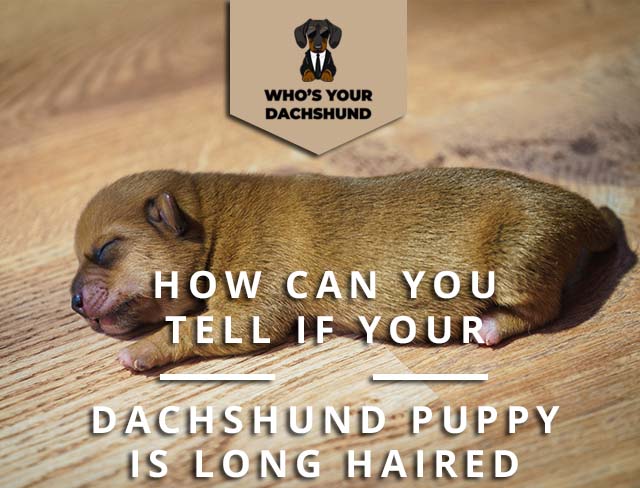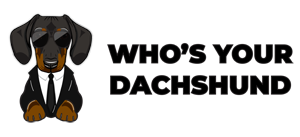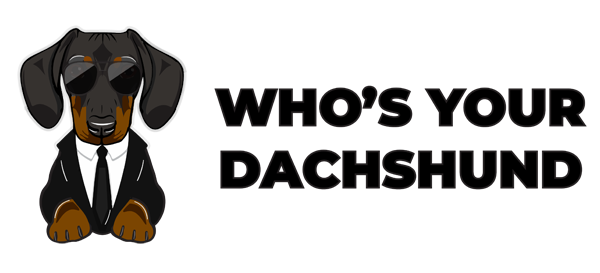
Telling the difference between a longhaired puppy and one that is not by appearance is tricky. Some subtle differences will help you determine which one it is. The main difference between a longhaired and short-haired pup, or longhair and shorthair, is the hair around their neck. Longhaired dachshunds have heavier fur on their necks while short-haired dogs do not. If a dachshund puppy has long ears, it is most likely longhaired.
Table Of Contents
- What is a Dachshund?
- Physical Traits of a Long Haired Dachshund
- Is your Doxie a Long Haired or Short Haired Dachshund?
- The Dachshund has three different hair types: Smooth-haired, Wire-haired, and Long-haired.
- What is the difference between long and short coats?
- When do Do Dachshunds’ Coats start to Change?
- How Much Hair Is There On A Dachshund?
- Does the Season Matter?
- Health Issues On Longhaired Dachshund
- An explanation for Denser, Soft, Silkier Fur
- Advantage of Longhaired Dachshund
- Conclusion
What is a Dachshund?
A Standard Dachshund is a short-legged, long-bodied dog breed of hound that was originally bred to hunt badgers and other burrow-based animal prey. They come in two varieties: smooth-haired and longhaired, although the longhaired variety is primarily an American Kennel Club (AKC) show breed. The AKC recognized the wire-haired Dachshund in 1972.
Miniature Dachshunds typically weigh between twenty and thirty-five pounds but can range from twenty-five to fifty pounds. They have a long, tapered muzzle, large bat-like ears, a square or rectangular body with muscular shoulders, and a well-muscled back. Their life expectancy is about 12-15 years.
Physical Traits of a Long Haired Dachshund
The good physical traits of a longhaired dachshund are pretty distinct. First, you should know that any dog that has long hair will almost always have longer legs- as well as longer ears. A doxies with a lot of hair on the neck and chest is typical; these areas have more than the rest. On the tail end, you may also see long hair. Typically, there will be some hair that sticks out past its standard length, especially on the underside-which is another way to tell that your pup is a longhaired variety.
There is a particular breed of Dachshund that has long hair. However, when a dachshund reaches adulthood, he will then grow short hair close to his body. Some may even grow a short-haired coat, but the famous ones with long hair are not exactly known for this feat. There is something of an image problem since people only associate them with short hair.
Is your Doxie a Long Haired or Short Haired Dachshund?
If your Dachshund has long hair, you may go to almost any pet store and purchase a coat for your puppy. These “dachsie coats” are available in varying degrees of length and look like little blankets. These are designed for the Dachshund to wear when they go outside on cool winter days, but they often get too hot in the summer. If you know how to tell if a dachshund puppy is longhaired, you can try to prevent your puppy from overheating.
The Dachshund has three different hair types: Smooth-haired, Wire-haired, and Longhaired.
Longhair Dachshunds
Longhaired Dachshunds have fur that grows longer from their body, hanging to their rear. They usually have a glossy and soft coat, making it easy for them to be brushed daily. They also tend to maintain a longer length of hair than short-haired breeds will. Longhaired standard dachshunds have more noticeable coats, so it is easy to tell them apart when laid out on the floor. This type of hair tends to be very curly.
Short Hair Dachshunds
The most notable difference between longhaired and short-haired Dachshund puppies is the fur around their neck. Short-haired dachshunds have a slight tan on their necks, but longhaired ones do not. They also tend to have more noticeable stubble and a heavier coat in general. Short-haired dachshunds are easier to groom because you don’t have to worry about brushing as much hair as that of longhaired breeds.
Wire-haired Dachshunds
Wire-haired dachshunds are often confused with the longhair breed, but they have very noticeable coat differences. Longhaired dachshunds do not have any fur around their necks. Their fur is also noticeably different than short-haired and longhaired dachshunds. Their fur is shinier, wavier, denser, and more “Wirey,” making it easier to groom an experienced dog owner.
What is the difference between long and short coats?
- A longhaired dachshund will have a longer coat than a short-haired dachshund. If these two breeds had babies together, you would probably think that the litter would be all longhaired. To determine which type of Dachshund coat you have, look at his back legs.
- The two breeds of Dachshund have different coat types. The most common standard size Dachshund breed is the Smooth-haired Doxie, a short coat, and the other breed, the Wire-haired Dachshund, has a longer coat. Their coats easily distinguish from one another by looking at their back legs.
- The smooth-haired Dachshund’s back legs will usually have a lot of hair, especially on the front end. The wire-haired Dachshund’s legs will not be as long because they have longer hair on their backs as well.
- Since both breeds of Dachshund can come in either short or long coats, you should not assume that if your pup has no coat under his fluffy little belly, he is a wire-haired Dachshund. A wire-haired Dachshund can also have a smooth coat, but this breed will typically have longer back hair than a Dachshund with the standard smooth coat.
- A longhaired Doxie will have longer hair on his back legs than his front legs. The hairs on the front of his feet are very short.
- A short-haired Doxie will have longer hair on his back legs than his front legs. His hair on the front of his feet is comparable in length to that on his ankles.
- A smooth-coated Dachshund’s coat is short and soft, but they often shed more than their wire-haired counterparts.
When do Do Dachshunds’ Coats start to Change?
Dachshunds are born with smooth coats. As they age and as the seasons change, their coat gets coarser. Dachshunds have short, straight hair that lies very flat on their bodies and is more likely to be noticed when changing. This transition happens at different times for different coats and different breeds.
As is expected in any breed standard, with age, you will find that certain Dachshunds are primarily longhaired, typically the ones with the white coats. That will be true of each hair on their body. It also has to do with whether the Weiner is a longhaired breed or not. These breeds have coat color variations such as Chocolate, Red, and Bicolor coat varieties like black & cream, chocolate & cream, and chocolate & tan.
How Much Hair Is There On A Dachshund?
- A Dachshund usually has a double coat. Otherwise, the dog has two types of fur: a soft undercoat and a coarse, long outer coat. You will find these types of hair on all dogs, except for poodles.
- Longhaired dachshunds have a double coat. The outer coat is made up of coarse hair, and the undercoat is soft and dense. The longer hair in the longhaired Dachshund helps it keep warm during the cold season. Dachshunds’ coats appear to be very resistant but not completely.
- The short-haired version of this dog is not as thick as its longhaired counterpart. This short-haired variation is prone to skin diseases and allergies due to short hair. The longhaired version is less prone to these problems.
Does the Season Matter?
The season will affect your dachshunds in some way. Not only will they be exposed to the elements (or not), but their food quality will be affected by where you live. For example, if you live in a colder area, your dog’s food supply will be harder to find, and therefore, they will need to eat more often than dogs living in more temperate climates.
Your Dachshund’s fur may also change with the seasons. Ensure you know how to tell if your Dachshund is longhaired during these changes. One of the essential things in a dachshund’s life is keeping its coat healthy and beautiful.
Health Issues On Longhaired Dachshund
Dachshund’s breed is prone to many health issues, such as skin allergies, Intervertebral Disk Disease (IVDD), and excessive graying or balding. The long hair may also cause matting, especially if the dog is not kept clean. Longhaired dachshunds require special care, including regular grooming and brushing. This breed is best suited for owners who have the time and desire to care for a pet that requires regular attention.
The Dachshund Club of America warns against purchasing any puppy without examining its parents first. It helps the owner rule out any potential health issues that may crop up soon.
An explanation for Dachshund’s Denser, Soft, Silkier Fur
Dachshunds have denser, softer, silkier fur than most dog family members. The reason for this is probably because, as a longhaired breed, their coats are usually more likely to get matted. Longhaired Dachshunds sometimes suffer from clogging of the oil gland on their tails, which causes a foul odor and messy staining around the tail base. Regularly grooming this area will help prevent these health issues from developing.
Longhaired Dachshunds can also develop stress knots near the skin’s surface. The constant tugging on loose hair in this area causes this, especially when playing or getting ready for a walk. To prevent this annoying issue, shorten your Dachshund’s hair to a bare minimum whenever possible. It doesn’t take long to complete, and you’ll be glad you did.
Pros And Cons Of Longhaired Dachshund
Pros:
- Thick, wiry hair is a great advantage that can make the dog prone to fewer colds and skin problems. The long hair also makes the dog look adorable and unique.
- You can clean long hair quickly.
- Long hair makes the dog look taller.
- Dachshunds with long hair can live under harsh conditions.
- Longhaired Dachshunds are frequently seen in the media.
- Long hair makes the dog adorable and unique.
Cons:
- The long hair can become a nuisance when it sticks to objects while playing or cleaning the dog. It is hard to clean it well because of its length, and it is prone to dirt buildup, especially in the ears and the mouth area. The dog might have difficulty eating when food gets into its coat.
- A long coat tends to be warmer than a short coat on the same animal.
- Doxies’ long hair is susceptible to changes in temperature. So when it gets cold, the dog will have difficulties staying warm, and when it gets warmer, the dog will get hot quickly.
- Longhaired Dachshunds cannot move well in tight areas such as beds or crates.
- A long coat makes it difficult for the dog to run (or burrow) under things like blankets or furniture.
- Hairs may get tangled in the eyes of the dog, causing pain and infection.
- A long coat makes grooming difficult because most dogs sided brush is made for short hair dogs.
Conclusion
The number of puppies that a female Dachshund can have in her life depends on what breed she is. You can determine puppies to be longhaired if they have hair over them. They also have longer legs and bodies and are usually larger than their short-haired counterparts. The lack of an undercoat can also distinguish them. Dachshunds with long hair will have a longer coat that can be brushed and cleaned and cared for in much the same way as a longhaired dog. Longhaired dachshunds may shed in large amounts, but this is manageable with the right kind of care. To determine which Dachshund puppy is suitable for your lifestyle, you should first consult a veterinarian or reputable breeder.

